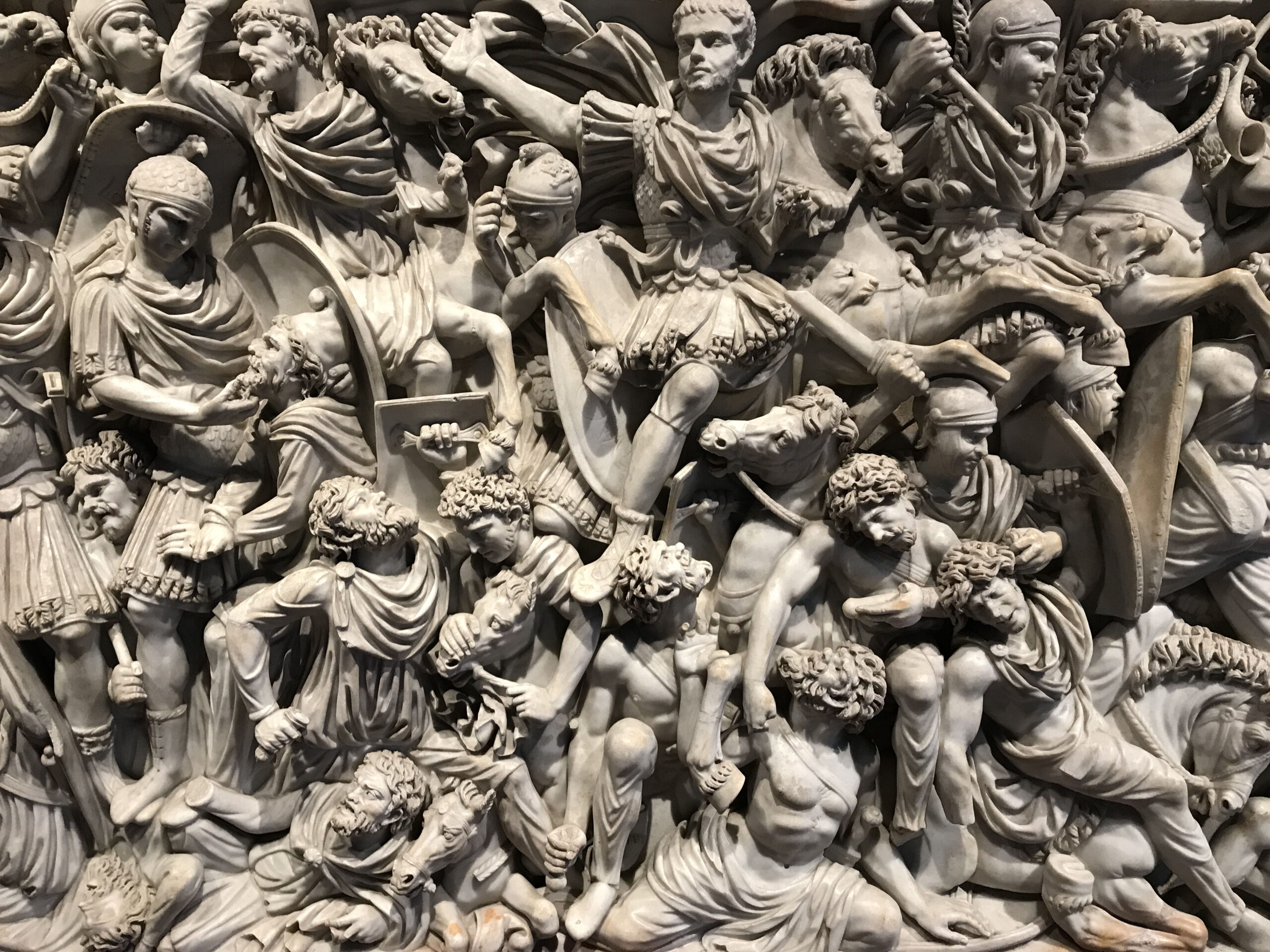Start with our video overview:
Palazzo Altemps is a 15th-century residence acquired by the Italian state in 1982 and now one of the four branches of Museo Nazionale Romano. The site has been occupied since antiquity, when the Stadium of Domitian was metres away. Excavations have unearthed tools and unfinished marble works, indicating the presence of marble workshops for local architectural use. This tradition is upheld by the museum which now houses the history of collecting and Egyptian collections, notably the Ludovisi collection acquired by Museo Nazionale Romano in 1901.
One of the most striking and renowned Ludovisi pieces is the so-called ‘Galatian Suicide’, a Roman marble copy of a lost Hellenistic bronze from around 230 BCE. A remarkable exaltation of a defeated enemy, it depicts the murder-suicide of a defeated Galatian. The figure holds in one hand the lifeless body of his wife whom he just killed to avoid her capture by their victors and in the other a sword with which he stabs his chest. The pathos in this work is typical of Hellenistic sculpture, as is the dynamism of the composition: each limb spreads in a different direction, commanding the exhibition space. The sculpture was excavated during the building of the Ludovisi Villa and until the 19th century, it was believed to depict a gladiator, but this portrayal of the defeated ‘noble savage’ is archetypal.
The Galatian Suicide represents cultural interactions between Romans and ‘barbarians’, while other works in Palazzo Altemps attest to other modes of cultural influence. For example, the Orestes and Electra sculpture dated to the first century BCE depicts a scene from a Greek tragedy and is signed in Greek by the sculptor Menelaus, student of Stephanos. The atypical short hair and larger stature of the female figure suggest mourning and older age with respect to the smaller male. A particularly informative aspect of the piece is the artist’s signature; this did not become common practice until the Renaissance, considering that there was little distinction in antiquity between artisans or craftspeople and artists, and no word comparable to our modern notion of ‘fine art’ in Latin or Greek.
Other highlights of the collection include the Ludovisi Throne and Sarcophagus, the former believed to hail from Magna Graecia around 460 BCE and the latter from a tomb near Porta Tiburtina around 250 CE, demonstrating the geographic, temporal, and stylistic range of the Palazzo Massimo collection. Each work narrates the traditions, ideologies, and tastes of the culture in which it was produced as well as the story of its survival from antiquity to the present day. For example, the Ludovisi Ares is an Antonine copy of a Greek original which was first displayed in the Temple of Mars on the Campus Martius, then lost, rediscovered, and adapted by Bernini who added or restored the sword and Eros. Whilst making the sculpture appear more complete, this interferes with its usefulness as a historical source, demonstrating the complexity of layered history embedded in the Palazzo Altemps collection.
References
- Claridge, “Rome: An Oxford Archaeological Guide”, (Oxford 2010).
- Marconi, “The Oxford Handbook of Greek and Roman Art and Architecture”, (Oxford 2018).
- J. Pollitt, “The Impact of Greek Art on Rome”, Transactions of the American Philological Association, vol. 108, (1978), 155-174.
- von Blanckenhagen, “Narration in Hellenistic and Roman Art“, American Journal of Archaeology vol. 61, (1957).
- Osborne, “The Art of Signing in Ancient Greece”: The Art of Art History in Greco-Roman Antiquity (2010), 231-251.
Explore further:
This content is brought to you by The American Institute for Roman Culture, a 501(C)3 US Non-Profit Organization.
Please support our mission to aid learning and understanding of ancient Rome through free-to-access content by donating today.
Cite This Page
Cite this page as: Darius Arya, The American Institute for Roman Culture, “Palazzo Altemps (Museo Nazionale Romano)” Ancient Rome Live. Last modified 04/08/2021. https://ancientromelive.org/palazzo-altemps-museo-nazionale-romano/
License
Created by The American Institute of Roman Culture, published on 08/14/2020 under the following license: Creative Commons: Attribution-NonCommercial-ShareAlike. This license lets others remix, tweak, and build upon this content non-commercially, as long as they credit the author and license their new creations under the identical terms. Please note that content linked from this page may have different licensing terms.



